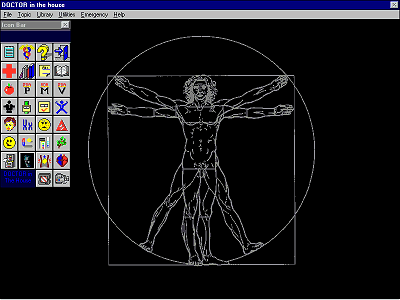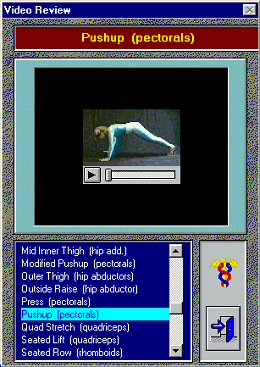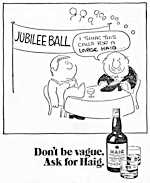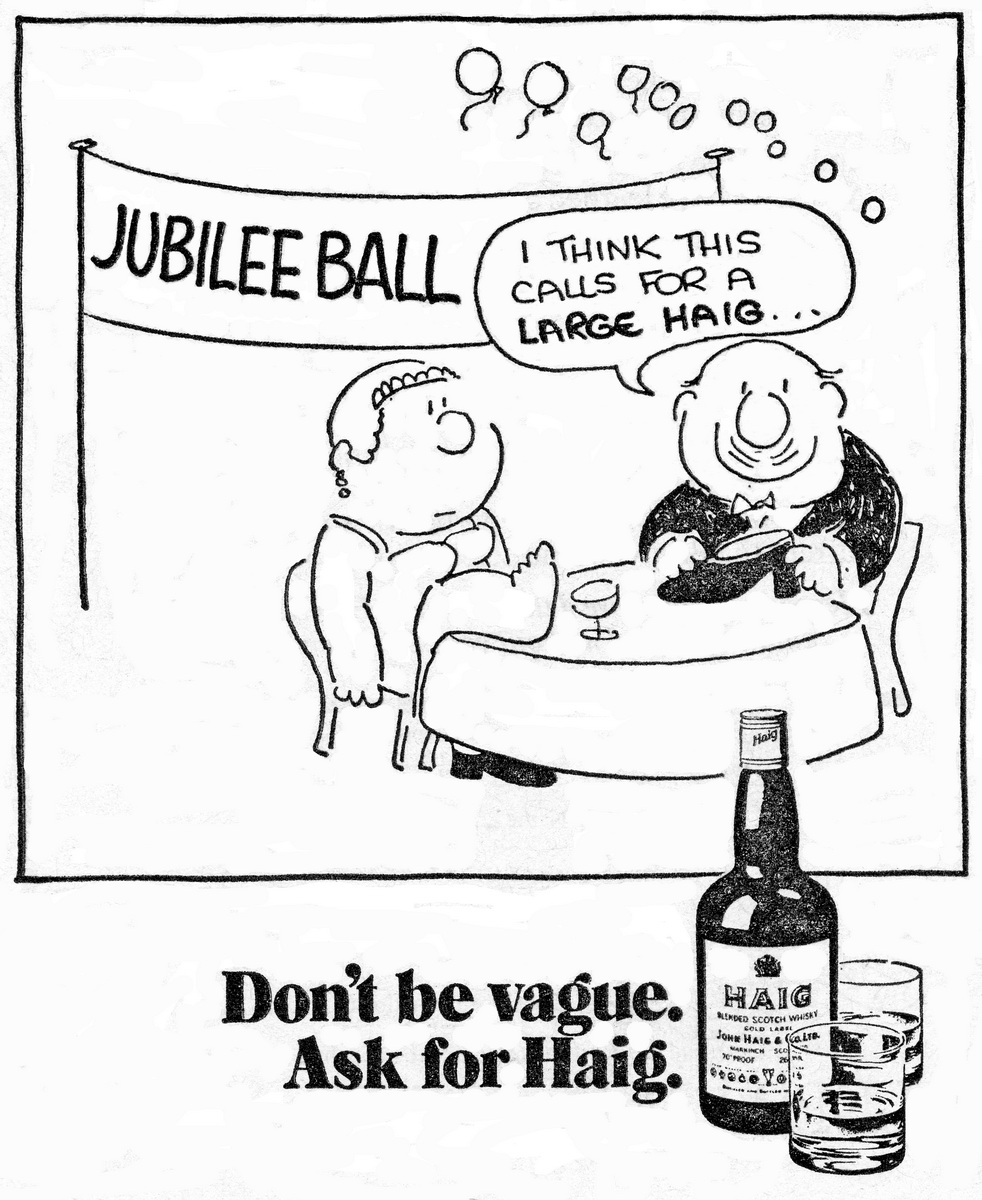Software Reviews
Dr Hilary Jones' Doctor In The House by GSP
Reviewed by Laurence Fenn
With a large signed picture of Dr. Hilary Jones in the front cover, this is meant to be a practical approach to medical issues, a multimedia family health system. It's requirements are fairly simple, a 386 processor, 8Mb of RAM, 3Mb of hard disc space, Windows 3.1 or 95, a 256 colour display, sound card, CD-Rom and mouse. Installation should have been easy, but was a problem. The set up program gives you a choice of a directory, then installs several VBX files into \WINDOWS\SYSTEM. It then goes on to install Video for Windows 1.1e. You have no choice in this, because if you cancel the installation here, no icons will be added. In fact, when I did let it install (and it didn't check my system to see if I had it anyway) it added only a few files and still no icons. Checking the manual, it read that the Doctor In The House icon will be in a program group called GSP Star Collection, but there was no group created. I then read the README.TXT file, which was the only file added to the \GSP\DOCTOR directory that I had chosen in the installation. It said that a program group called 'Lifestyle' was created, and 3 icons labelled 'DOCTOR in the House' 'G|S|P Catalogue' and 'Readme' were installed. They weren't, and I checked this against CleanSweep 95, which was monitoring the installation. I had to search for the icon referred to on the CD-ROM itself to run the program.
When I finally got the program to run, you see a full screen intro logo of GSP, and then a 640x480-colour picture of Dr. Hilary Jones. I was running in 800x600, so I had a border of my desktop around the picture. There are only two buttons, one marked Intro, and one with an arrow on it. Clicking on the Intro one has the doctor introducing the CD, with the exact text that appears on the first page of the manual. Clicking on the arrow shows the licence agreement, and then the main screen.

This runs in full screen with no minimize, maximize, exit buttons or taskbar available. This was due to a Graphics Server Program that also runs, but you can still use Alt+Tab to select any other programs or get back to the task bar. So far, the 'Doctor' had not been very user friendly. The pull down menus duplicate the subjects covered on the buttons. The menus divide into File, Topic, Library, Utilities, Emergency and Help. Within these groups are the individual sections of:
Common Accidents - with a general introduction, you can choose a condition and get general details of it's severity and initial observations, home treatment and how to follow up the incident. You have four buttons, some of which appear on other screens, namely a question mark (for help), a speaker (for a narration), a door (to exit to the previous screen), and a card file, which selects one of the five accidents (bruising, burns, animal bites, lacerations and frost bite).
Disease Library - here you can choose from a list of over 400 different diseases and ailments, getting information on it's condition and cause. There's an extra button (actually marked 'Extra') which gives late additions to the existing library. This includes Creutzfeldt-Jakob Disease, or CJD, the human BSE Mad Cow Disease, which has received high media attention in the last few months.
Acronyms and Abbreviations - 4000 items are listed here, and can be searched through an alphabetic index or search function for a particular word or nearest word.
Dictionary - This can be searched and is context sensitive. Highlight a word anywhere in the rest of the program, select the dictionary option and an explanation of the word will be shown.
Nutrition - Explains the importance of Proteins, Fats, Carbohydrates, Minerals, Vitamins and Water.
Proteins, Minerals & Vitamins - For the mineral and vitamins, you have a table showing the recommended daily allowance, according to your sex and age which you can input. For the proteins, you can vary the weight from 1 to 200 lbs, and amino acid requirements for an adult, child or infant are displayed.
Obesity - Explains the associated factors, treatment and complications of this subject.
Height & Weight - select your gender and frame to display a graph showing what your ideal weight to height ratio should be. You can alter the weight and height by moving sliders, and the graph will then change accordingly.
Ideal Weight - Choose between male and female, and your height in inches, will show what your ideal weight should be.
Physical Therapy - shows a variety of toning and stretching exercises, which can be selected by the description, or the particular set of muscles used.
Child Development - describes the first 12 months, with information on movements and posture, fine and fine movements, play and social behaviour and speech and hearing,
Genetics - a detailed study of genetic disorders and the study of chromosomes, showing with graphs how abnormalities can be inherited from one parent or both.
Infectious Diseases - another database on diseases, with details on method of spread, incubation period, infectious period, treatment and background.
Aids - a discussion of the Acquired Immuno Deficiency Syndrome, with categories on general definition, symptoms, and summary.
Symptoms Analysis - You start by pointing to the area of the body where the symptom occurs (on a statue), or choose from the class list (say chest pain). Then you specify a particular symptom (with a cough) and proceed to the analysis. This is a series of up to five yes or no answer questions like 'does the cough produce blood?'. The final possible cause is then given. Of course if you suffer from these symptoms you should see a doctor yourself, rather than rely on a program to help.
Drug Side Effects - index according to the prescribed drug, or the side effect. The drug index can also be searched.
Home Tests - how to do them and what the results mean. You can choose the test class (say TEMPERATURE), the individual test (er, temperature), apparatus needed (a thermometer), associated diseases and a brief description.
Herbal Medicine - a database of herbal medicine with colour pictures, descriptions, ingredients and uses.
Medical Records - create a personal record card, and accounts dialog to record medical bills. All details can be printed.
Fatigue - How to combat it, covering diet, mental state, condition, stimulation, attitude, chronic fatigue syndrome, z sleep and tips & tricks.
Emergency Care - choking and CPR (Cardio Pulmonary Resuscitation). Video clips with voice-overs.
Graphics & Video Review - The video review allows you to see any of the 55 video clips on the CD. 51 of these are taken up with the exercise clips, and are silent and small. The frame size is as small as 115x67, and on a display at 800x600 pixels, this is very hard to see. In the exercise section you have an explanation of the exercise before playing the silent clip yourself. The other video clips are of the Heimlich manoeuvre, on a conscious and an unconscious person, and of CPR on a child and an adult. One of each of these is in black and white, but at least there is a running commentary as the procedures are shown. Maybe this was done to save space, but the whole program takes 232Mb of the CD-ROM, plus 144Mb of demos of other GSP programs, plus Video for Windows 1.1e installation files

I'm a diabetic and have to take two daily injections, so I thought that this would be a good subject to search for in the program. I started in the dictionary, with the word diabetic, but it wasn't in there. It did point to the subject Diabetes Mellitus, so I then tried the disease library:
DIABETES MELLITUS (a)
A disease representing the breakdown of the body's normal insulin and glucose balance, allowing the occurrence of excessively high levels of sugar in the blood. It may occur through genetic inheritance or from the stress of pregnancy and obesity, or from the use of steroid drugs. In childhood it often develops out of the blue severely requiring treatment by injections of daily insulin. The milder type of diabetes starting in older people usually only requires treatment with oral drugs and/or diet restriction.
Untreated diabetes causes HYPERGLYCAEMIA (high blood sugar), which develops over a period of days, weeks or months with excessive thirst, frequency of urination, weight loss and eventual coma, requiring treatment with insulin or drugs. Complications can involve loss of vision, problems in circulation, recurrent infection or boils and also kidney problems. Treatment may include insulin injections, hypoglycaemic drugs and dietary restriction.
Occasional HYPOGLYCAEMIA (low blood sugar) can occur as a result of excess insulin treatment or inadequate carbohydrate intake in which case symptoms include confusion, aggression, sweating and rapidly developing unconsciousness. Immediate administration of sugar by mouth or intravenously is the required.
DIABETES MELLITUS (b)
Incidence: 2 in 1000 Heritability: ?
Sex Ratio M/F: 1/1
Normal parents:
-having second affected child: 8%
One affected parent:
-having affected child: 8%
-having second affected child: 10%
Characteristics;
HERE IT REPEATS THE COMPLETE TEXT UNDER DIABETES MELLITUS (a)
DIABETIC RETINOPATHY
Long standing diabetes, especially if under less than ideal control, will be complicated in 90% of cases by changes in the eye or diabetic retinopathy. The main problems are microaneurysms, small haemorrhages, fatty exudates and formation of new blood vessels in the retina. They tend to occur in the macula region with consequent loss of central vision. The loss of visual acuity is gradual and progressive. Modern treatment uses photocoagulation and laser surgery to obliterate new vessel growth and prevent further visual disturbance.
GLUCOSE
Blood glucose measurement reflects the ability of the body to metabolise glucose and its source foods as well as the health of the organs concerned with that metabolism. It may be measured by either a single reading utilising a test strip or by performing a glucose tolerance test which is a series of readings following ingestion of a known quantity of glucose. Although the latter is more of an accurate measurement, the single test is sufficient to show up any problems and the tolerance test may then be performed by a laboratory for more accurate measurement. To measure the blood glucose level, a small drop of blood is obtained by puncturing a finger tip with a sterile lancet and transferring it onto a test strip. The resulting change in color may then be compared against a printed color code or read by an instrument called a photometer to determine the glucose concentration of the blood. This should normally be between 80 mg per ml and 180 mg per ml. A single abnormal reading may be influenced by many factors so it is common to repeat readings 2 or 3 times, or perform the test in the morning after fasting for 12 hours, when it is usually more reliable.
The most common cause of high blood glucose is Diabetes Mellitus, and this test is often used to monitor the progress of diabetics when they are under changing treatment as it is more accurate than the urine test. A single high reading is not usually considered significant as it may be influenced by the person's emotional state as well as food intake or exercise prior to the testing. Blood glucose readings are also usually higher with age and may be then acceptable above 180 mg per ml. Other conditions causing elevated results may be pregnancy, hypertension, obesity, heart disease, infection, injury, smoking, pancreatitis, thyrotoxicosis and cushings syndrome as well as side effects of some drugs such as diuretics. Repeated high readings of blood glucose should always be referred to a physician for further evaluation.
The glucose test is something I have to do regularly, and although from the home test section you can click on the associated diseases to get Diabetes Mellitus, you can't go anywhere from the Disease Library. In other words, there are no hyper-links or easy way to go from one related section or topic to another. I had a lot of searching to do to find the above information, and the only pictures I could find were of the glucometer and the sticks that are used, which you cannot copy the pictures. By selecting a section of text and then opening the notepad, you can paste the information into a plain text file, but if you wanted to use this information in a word processor document, you would have to copy again from here to the file.
The interface is not an easy standard to get used to, and does not 'fit in' the look of Windows 95. The graphic detail of some of the pictures was a bit too much for my liking, and although there was some good information, it was difficult to find. The subjects are varied and graphically detailed in places, but I couldn't see this as program I would want to repeatedly use. The multimedia aspect was a let down, with small video clips (to view), voice overs that gave little extra information and music added to make the introduction look better. The manual was inaccurate with it's description of the installation process, and as I had to run the program from the CD each time, I also had to click on the licence agreement each time. I was not impressed with GSP's multimedia encyclopaedia a while ago either, and the errors in this package show that there has been little improvement.
Alternatives are Dorling Kindersley's Family Medical Guide (£32.99), MAYO Clinic Medical Guide (£11.90), Dr Schueler's Medical Adviser (£49).
Review first appeared in ROM Newsletter of the Guildford PC User Group in April 1997 (Vol.7,No.4)
Back
